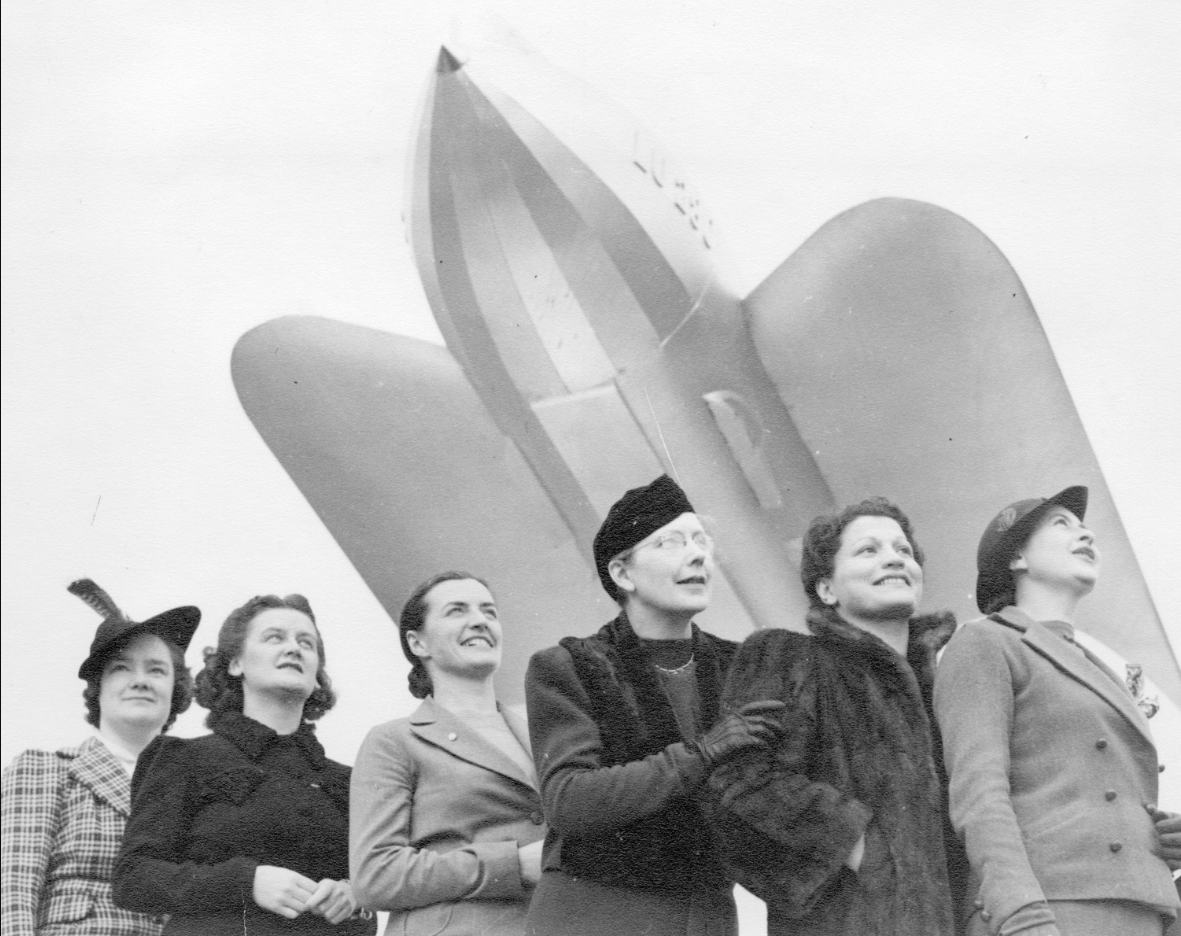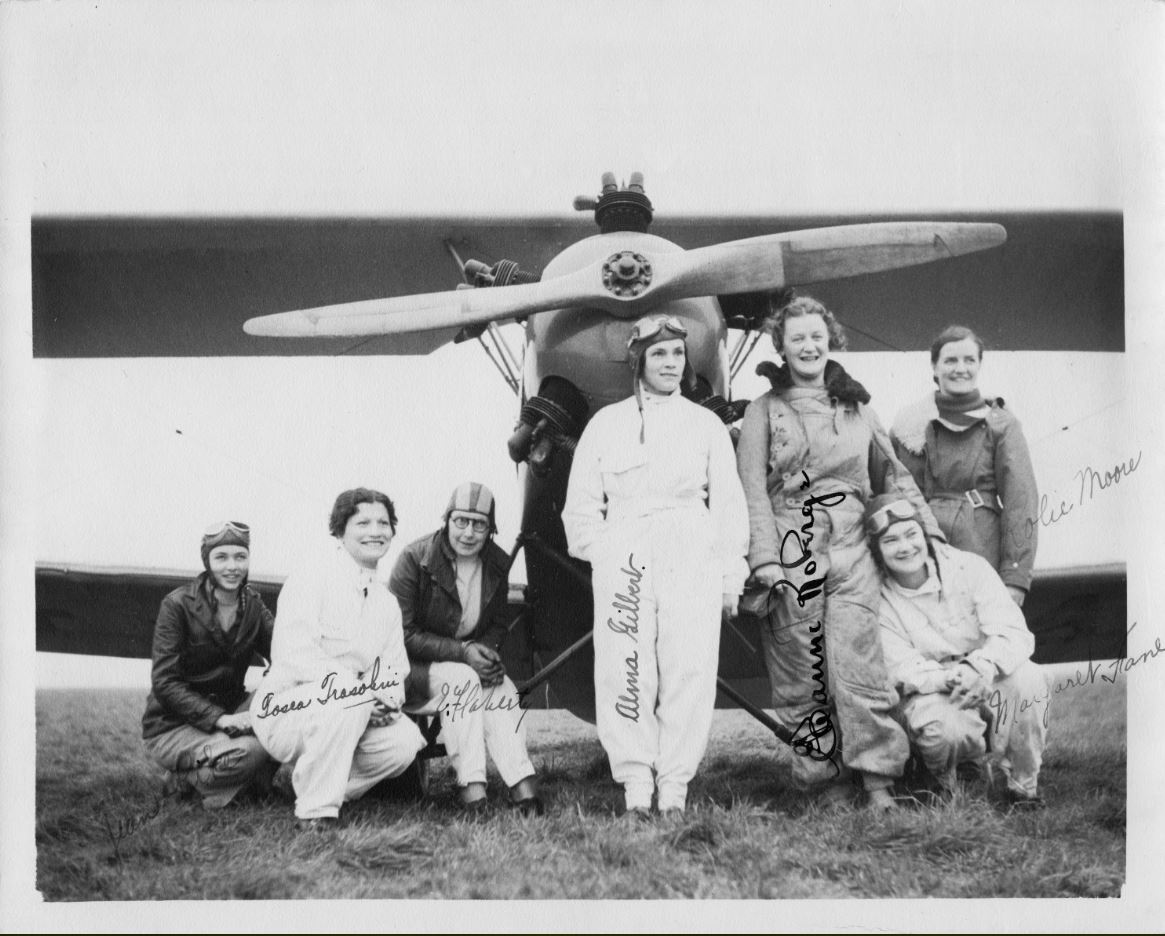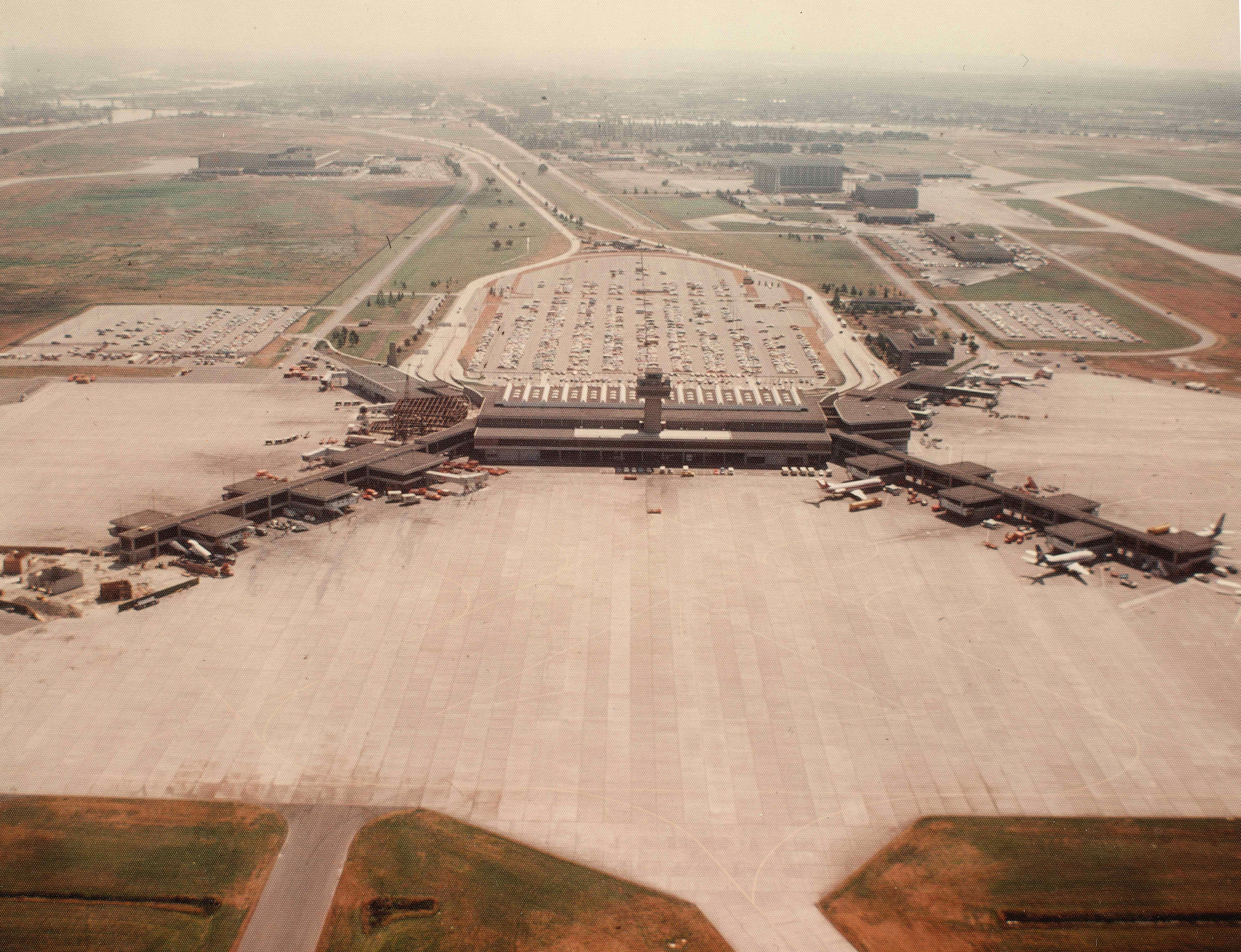The Flying Seven formed in 1935 and were Vancouver’s all-female aviators’ club

Vancouver’s aviatrices:
This is one of my favourite photos. It ran with a story in Sensational Vancouver and shows six members of the Flying Seven posed in front of the rocket ship at Vancouver International Airport. The Flying Seven were Vancouver’s all-female aviators’ club. Tosca Trasolini—second from the right—was the youngest member at just 29 in this 1940 photo. The others were Margaret (Fane) Rutledge, Rolie Moore, Jean Pike, Betsy Flaherty, Alma Gilbert and Elianne Roberge.

The club formed in 1935 after Margaret Rutledge flew to California to meet with Amelia Earhart, president of the Ninety-Nines—an American organization for women pilots. There weren’t enough experienced Canadian pilots to form a chapter, so the Canadian women started their own.
Flying Flappers:
Newspaper editors called them the “Sweethearts of the Air,” “flying flappers” and “angels,” defying what a Chatelaine article had asked a few years earlier: “Are women strong enough to fly with safety? Are they fitted temperamentally to operate aircraft.” The women flew Fairchilds, Golden Eagles, Fleets and Gypsy Moths—they said that a woman’s place was in the air. Fane and Roberge held their commercial pilots’ licence.

The members of the Flying Seven attended an airshow sponsored by the Vancouver Junior Board of Trade in 1936. “They stopped us at the gate and told us we couldn’t go in,” Trasolini later told the Vancouver Sun’s Stuart Keate. “We were just as interested in the different machines as a lot of men around the place. But don’t worry, we made it.”
The enterprising Trasolini got hold of an admittance ticket, had a look around and one by one the other six women went in to see the aircraft.

Strathcona-born Trasolini, told Keate that she’d always “been crazy to fly” she just didn’t have enough money to do it until she got a job as Angelo Branca’s legal secretary.
Related Stories:
- The Cambie Street Rocket Ship
- Rollie Moore, The Flying Seven and Burnaby’s Hart House
- Tosca Trasolini and the Flying Seven
For more stories like this one, check out Vancouver Exposed: Searching for the City’s Hidden History
© All rights reserved. Unless otherwise indicated, all blog content copyright Eve Lazarus.





